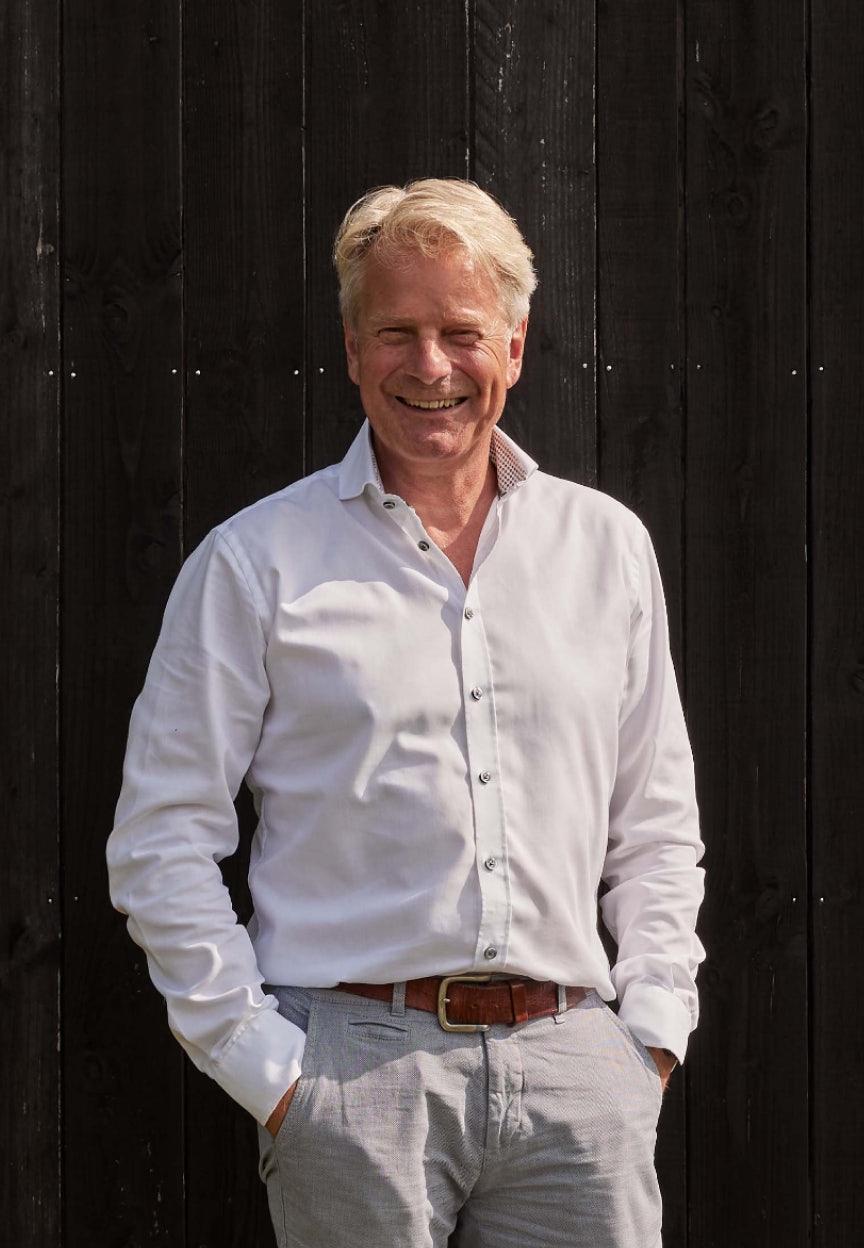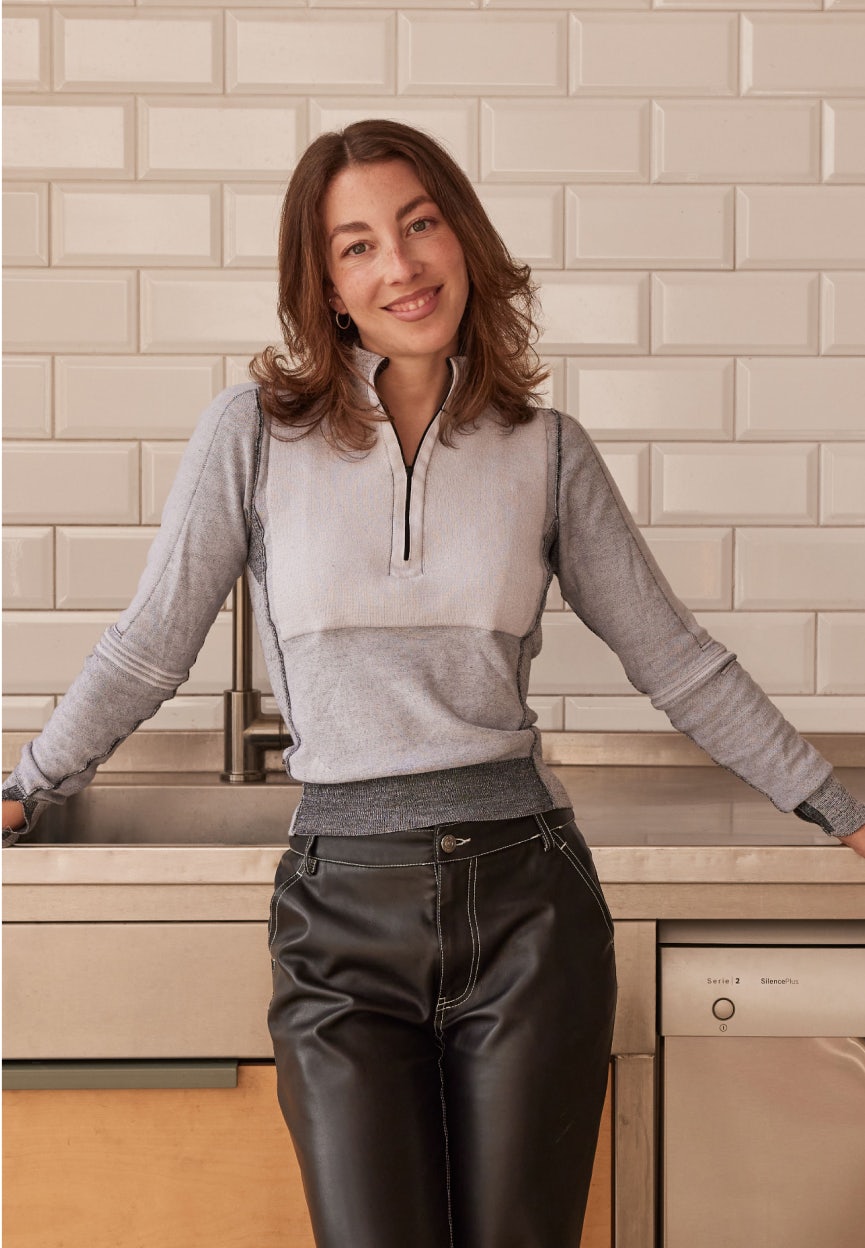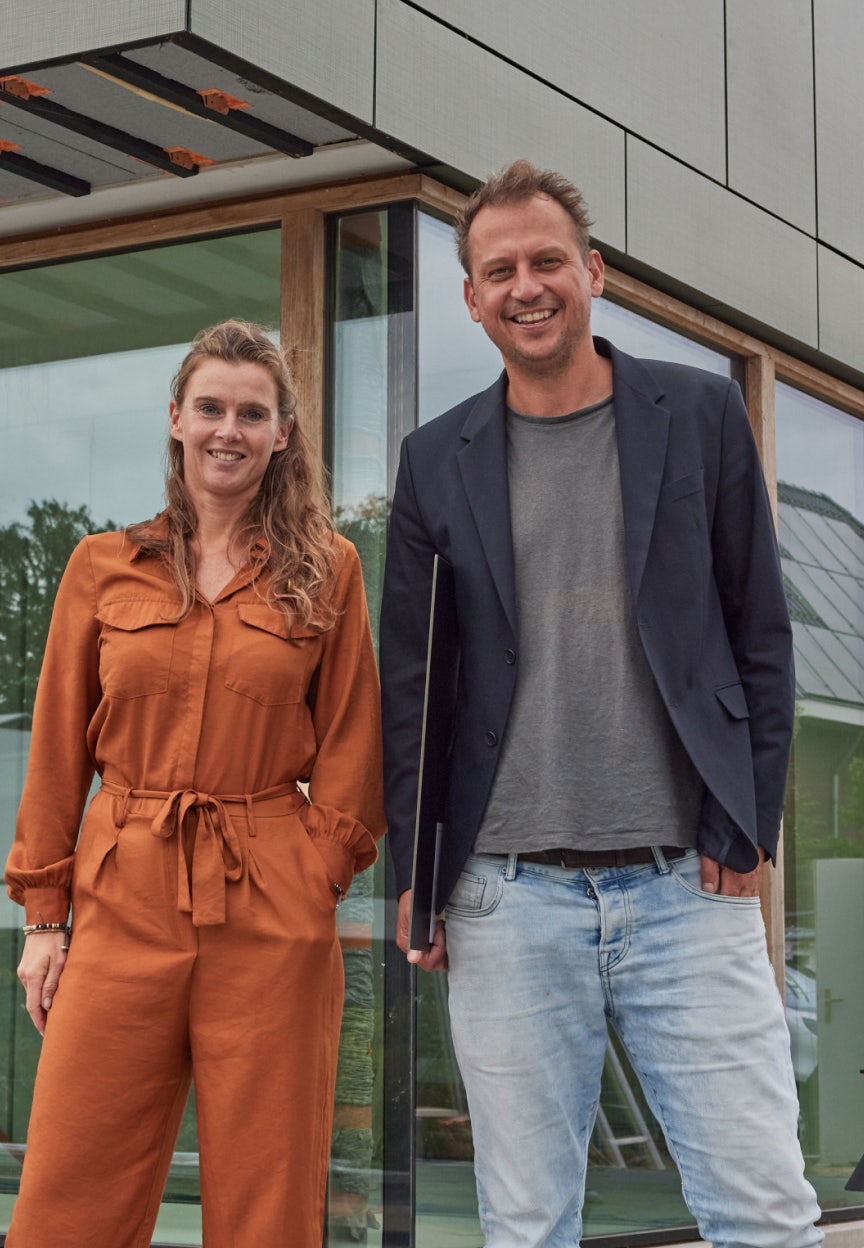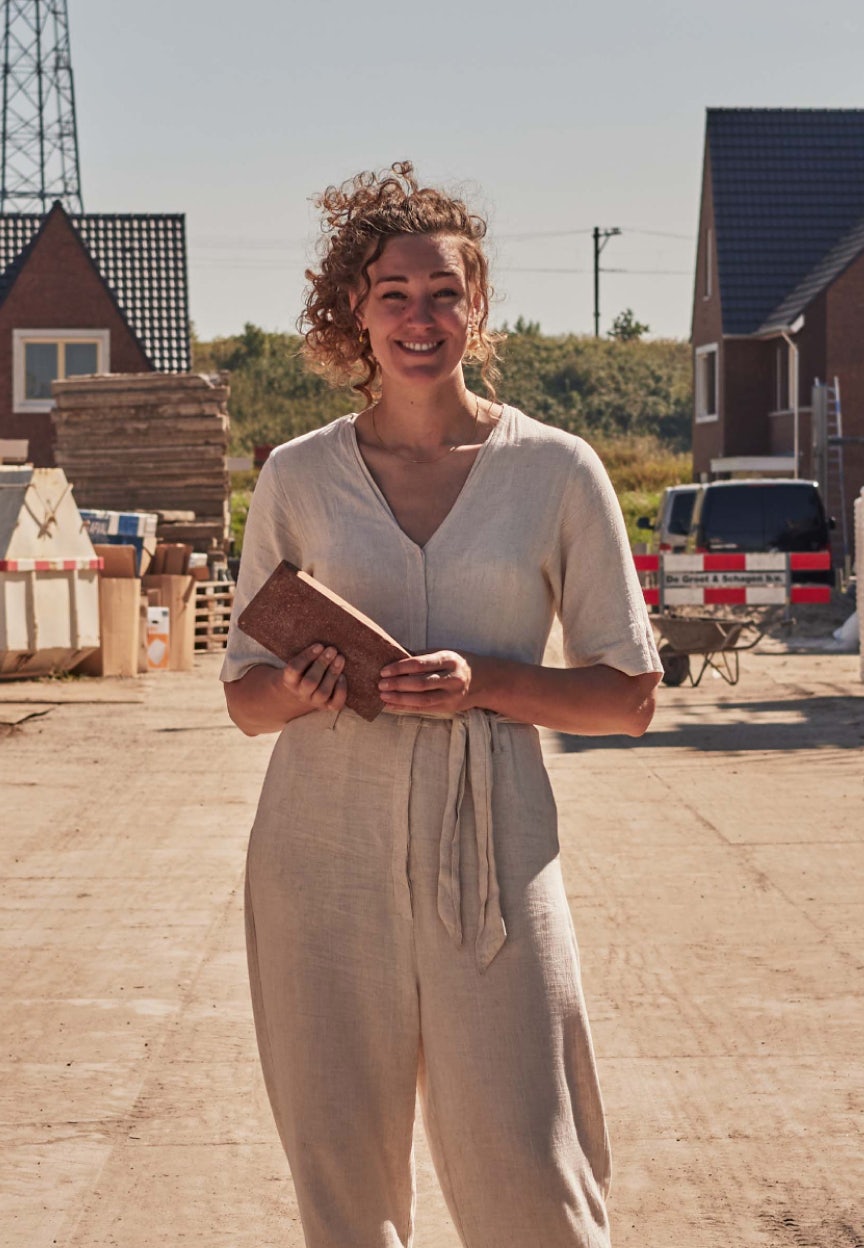
CELIUM™ BY POLYBION
Axel and Alexis Gómez Ortigoza
Celium™ is a customizable bio-textile that might well become the new gold standard for fashion, footwear, sportswear, and automotive applications. Polybion is a new company that found a way to produce this versatile and natural material made of cellulose, cultivated with bacteria that eat agricultural waste.
Every year there are 23 billion square feet of leather and plastic alternatives produced globally. With only the mango waste in Mexico, they could produce an alternative for about 50% of the world leather supply. And there are many more industries that can benefit. This solution not only addresses environmental issues like livestock farming, food waste, and plastic pollution but also pioneers a circular manufacturing model.
We spoke to the co-founders Axel and Alexis Gómez Ortigoza (a.k.a. the GO-brothers) about their values, dilemmas, future opportunities and dreams for the future.

Two brothers who share an interest in bio-tech. Is this by nature or nurture?
Alexis: “Our father was a tech entrepreneur back in the eighties, so we grew up surrounded by technology. We talked about tech trends during dinner. Our mom is a chemist, and Axel started working in her laboratory from a young age. Alexis has a background in finance, but our shared interest in biotech is not a coincidence.”
Axel: “I also think the environment where we grew up played a role. We grew up in Mexico in the outskirts of Irapuato, which was full of wildlife. Mexico is one of the most biodiverse countries on the planet. So everywhere you look there's so much diversity of life from plants, insects, reptiles, mammals, everything.
Growing older and thinking about the future of humanity, we foresaw that climate change was going to be the problem of our generation. Everybody can feel the heat, the droughts, the storms. I think that's why we started to fuse our background in technology and biology. To build something with a purpose that could help at least a bit.”
You want to fuse technology and biology for a higher purpose. What purpose is that?
Alexis: “We want to grow a better future, one cell at a time. In our case we want to revolutionize global material use and find better solutions to produce any kind of material. By looking at and learning from biology we come up with better alternatives for commercial applications. We believe you can do both: taking care of our planet, whilst introducing new commercial solutions. It can be the next generation of capitalism. Because capitalism isn't going away, but we need this shift to more sustainable ways.”
Axel: “We have several values that we live by. One of them is doing more with less. Nature is our best example, it’s very efficient. We humans are not. One example is food waste: we throw away 30% of our food. That’s not efficient. Another value is to work with nature instead of against it. We want to decouple economic growth from carbon emissions. We believe we can use technology that is much closer to nature and create a new form of civilization that has a better quality of life.”
Alexis: “It's a whole new paradigm of manufacturing. Traditional manufacturing is based on mining: you mine or extract a material, you use it, you dump it, and then you forget about it. We want to change that into a circular method.”
The lesson is that cellulose is a magic material!
What lesson did you learn from biology and how do you translate that to technology?
Alexis: “The lesson is that cellulose is a magic material!” Cellulose is the most produced polymer on the planet. A very pure and natural material. Everywhere you look, nature is composed of cellulose. It gives plants and trees structural support, helping them keep their shape and stand up to external pressures. We foresaw that there must be a reason why mother nature chooses cellulose as its building block.”
Axel: “Cellulose is a chain of glucose, or sugars, pasted together. Such a chain is called a polysaccharide. Cellulose is the purest form, but there are many polysaccharides. Like chitin, which makes up the shells of seafood or the exoskeletons of insects. Or lingin. If you see plant material, the
softer it is, the less lignin it has. A leaf is 100% cellulose. The bark of a tree has about 30% of lignin. So, if you combine cellulose with lignin, you get lignocellulose, which is wood. And like that, combining cellulose with different materials, you can create everything you see in nature. The best thing is that you can also create these materials in a lab. Cellulose is like a blank canvas that we can design lots of things with. We could impact so many industries.”
Axel: “We found a very efficient way to produce 100% cellulose, made by bacteria that feed on the sugar from agricultural fruit waste. The bacteria convert sugar into tiny cellulose fibers: bacterial cellulose. Now it's fruit waste, for example mango peels from huge manufacturing operations here in Mexico. But everywhere on the planet where there are humans, there is agriculture and waste that we can use. As long as it contains glucose, so sugar. It’s a plug and play solution. You can adapt this in every location where there is food waste.”


So, you have found a natural and low impact material solution: bacterial cellulose. Which industries do you want to change with it?
Axel: “Right now, we focus on the leather industry. Our current material is a good alternative to leather. It's even more sustainable than other alternatives, like mycelium, because it is more versatile and has a longer life cycle. And it’s much more scalable. It’s easily customizable in color, texture, and water resistance. It offers a luxurious, sustainable textile option.”
Alexis: “Leather is widely used across multiple industries, like fashion, sportswear, automotive. It’s a big and global market. But going forward, we could use bacterial cellulose for a lot of different things. We can also make paper for the pulp industry. It's a huge, massive industry that relies on growing forests for 30 or 40 years. We can get pure cellulose from waste in 20 days instead! At scale, without cutting the trees. And without adding a lot of acid.”
What can be the impact of your solution on the leather industry?
Axel: “I’d like to point out that we focused on a solution that can be so versatile that it can impact several industries. But we decided to start with a very big industry such as the leather industry because leather is so widely used across multiple consumer products. All vegan leather options on the market today contain plastics, which is also not sustainable. We call those pleathers. Every year there are 23 billion square foot of leather and pleathers produced globally.
We offer a new biological substrate, nanocellulose. There is no plastic involved. And we can tan this with the same infrastructure of animal leather tanneries, which makes scaling an option without huge investments. We can even use breweries, because it is a liquid process. We can revolutionize the whole industry.
Alexis: “For the leather industry, we did a little calculation. If you transform only the mango waste in Mexico to Celium textile production, we could supply about 50% of the world leather supply. And this is just the mango waste, just in Mexico. When we did a life cycle assessment it was certified that our solution is the most sustainable biomaterial, or textile in the planet. It's even more sustainable than other alternatives, like mycelium, because it has a longer life cycle. This is as sustainable and as circular as it gets.”
Can you tell us more about how you produce Celium as an alternative for leather?
Axel: “Yes! We use mango peels from huge manufacturing operations in Mexico that process food and package it. They throw away tons and tons of these peels. We add the fruit waste in an incubator, a huge room very similar to a greenhouse, in which we control the environment. Here, the waste is converted into food for the bacteria. Depending on the final thickness of the leather you want, we put it in there for 10 to 20 days. We ‘grow’ the material and after that, we can harvest it. What comes out is a hydrogel that looks like a piece of meat.”
Alexis: “After that comes the second stage in the production plant, which is a tannery. It’s the same equipment as you would use traditionally, but with a different chemistry because it is a different material. We use much less water, much less energy and non-toxic chemicals. We don't use any metals like chromium or aluminum or aldehydes. We’re basically farming bacteria to produce nanocellulose for us, and then we are tanning the nanocellulose to convert it into a new fabric that can be used as a leather alternative. We call this finished material Celium™ - Premium Cultivated Cellulose. We source everything from under a 60 kilometer radius. Not only the fruit waste, but also the green chemicals that we use to tan it.”
We use mango peels from huge manufacturing operations in Mexico that process food and package it.
Are you already selling this material? Are there already products on the market made of Celium?
Alexis: Yes, but we are not selling a finished product to the consumer ourselves. Having said that, GANNI, one of the hottest brands from Denmark, is already working with us. They released a “Celium™” Blazer and some prototypes of bags that were exhibited during the Copenhagen Fashion Week in January. They are now working on including Celium™ in their 2025 collection . We get a lot of comments that people love the look of the material. For us, these real world validations and prototypes are very important.
Axel: We need such success stories between biomaterials companies like Polybion and global iconic brands like GANNI. These truly are beacons of hope for a more sustainable material world. Together we can show that these kinds of technologies can be deployed for crafting beautiful products on a very large scale.
Are you ready for more brands to start using your textile?
Alexis: “Yes. But we don't work with everybody, we have a list of clients with solid sustainability targets that we want to work with and who want to work with us. That list keeps growing, and more are invited.”
Axel: “We find it our responsibility to design a material that performs well, is durable and sustainable. We give a client, for instance a fashion brand, Celium to work with as an alternative to the leather they would normally use. But Celium is probably only one of the material resources they need for their product. It’s their decision and responsibility how they use it. This means that the sustainability of a final product will depend on the brand that uses our material. Each brand has different targets and requirements, and we want to help them to make positive change.”

Are there other challenges that our community can help you with?
Alexis: “I would say, the next big important thing for us is to get ready for commercial collections from the fashion industry. We are working hard to be able to solve the latest challenges, so we can be ready for more and larger brands.”
Axel: “We’re almost there. To get to larger scale production our material has to perform, be aesthetically pleasing, and it has to be sustainable. Those three things must be there. Our material is already produced industrially, but we want to improve our tanning methods. Since the cellulose we produce is hydrophilic, meaning it absorbs water, the coating can start to peel off in humid circumstances. We need more time to find the most suitable methods. The leather industry also took a lot of time for research and development, so I think we are on track.”
Alexis: “And also, what we make should appeal to the consumer. The products that are created with our material have to be sexy, cool and beautiful. Celium™ represents a new category with brand new aesthetics that you wouldn't be able to get with leather or plastic. It’s easily customisable in colour, texture, and water resistance, offering a luxurious, sustainable textile option. To have clients like GANNI that are brave enough to embrace this new aesthetics and put it in the market is really important for us. They can help us to create awareness, and let people reimage what leather should look and feel like, and where it should come from. Try different things.”
What is the message that you would like to share with everyone who reads this interview?
Axel: “I would say that the message is that there is a better civilization possible that can coincide with nature. We need to unlearn what we learned about materials and manufacturing methods, because we were wrong. There are better ways that collaborate with nature instead of taking from it, and we need to open our eyes to see them.”
Alexis: “Yes. I think that the next wave of consumer applications can come from nature. We should co-design with nature and make new ideas widespread. We can design products with biology and scale in mind at every step of the process, solving many of the problems that civilization has with materials. By doing this, we can create a new civilization. In conclusion, we should partner with nature to come up with the next wave of very cool applications.”
Storie brevi

ForestGuard
ForestGuard is an advanced wildfire prevention system. This device detects forest fires within the first 15 minutes and helps communities worldwide to protect their valuable forests and natural resources. An integrated monitoring system can help to manage a fire before it starts or turns into a full-blown fire.

Secrid Talent Podium - Electric Skin
Electric Skin is a speculative idea that can change how we relate to daily electronic objects, such as our phones. A team of female biodesigners use bacteria that naturally produce electrical proteins for use in electronics. It could be possible to make compostable electronics by integrating these proteins into algae-based biomaterials.

Secrid Talent Podium - Fungi Force
Entrepreneur Frans van Rooijen and scientist Dr. Michael Sailer are launching a varnish made from natural raw materials.

Secrid Talent Podium - Vorkoster
To combat food waste, Kimia Amir-Moazmi is working on a product that allows consumers to see for themselves whether food is still safe to eat.

Secrid Talent Podium - Solarix
Solarix designs and produces aesthetic solar panels as façade cladding.

Secrid Talent Podium - Claybens
Emy Bensdorp is developing a technique to transform clay soil contaminated by PFAS into 100% clean bricks.

